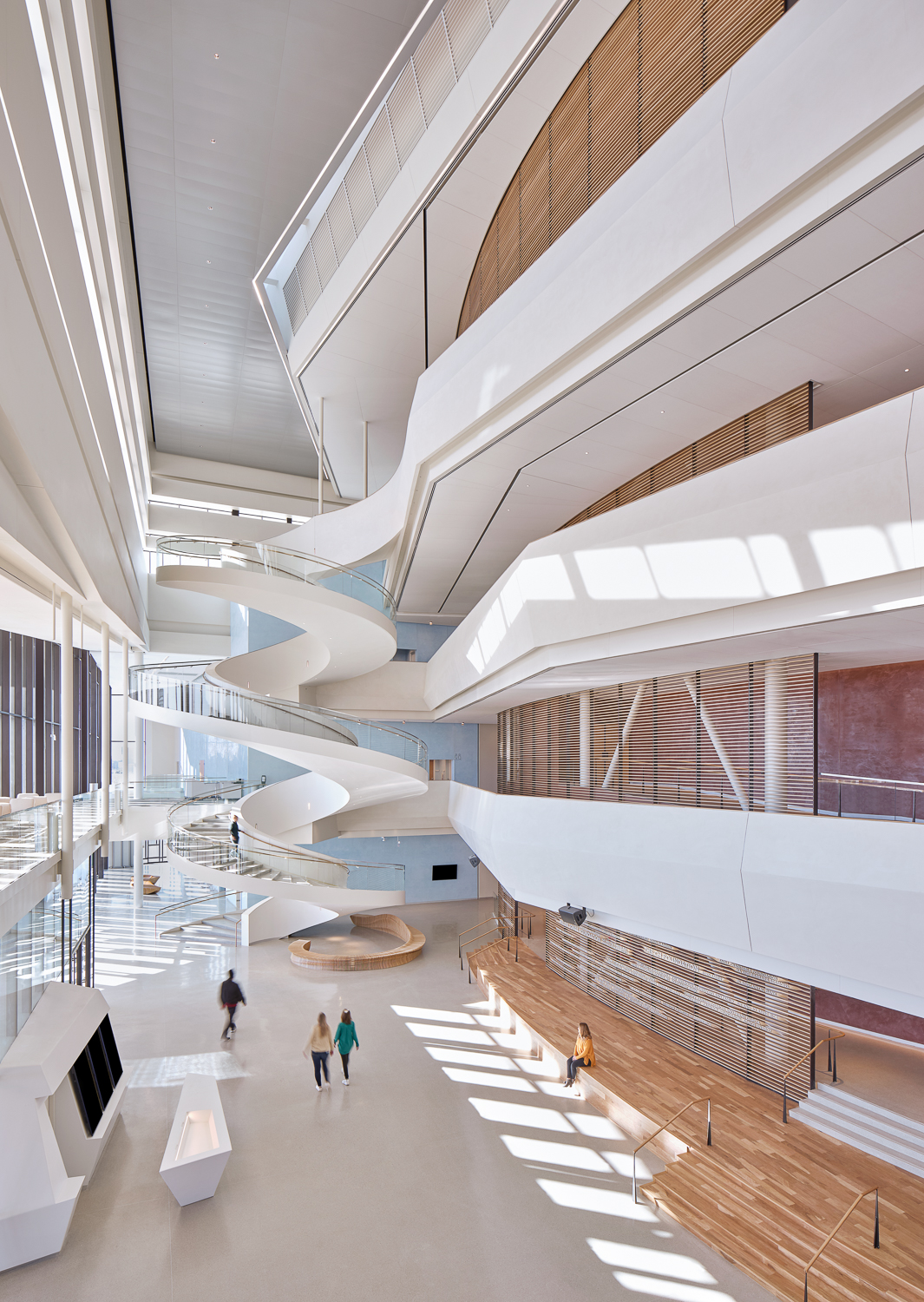Feature Stairs: A Champion of Active Design
Architects and designers today have the ability to play a crucial role in combating the “inactivity epidemic”. By incorporating active design strategies - such as prominently placed and inviting feature stairs into building design - the built environment can encourage occupants to take the stairs and incorporate physical activity into their daily routines, which can lead to improved physical health and well-being.
Feature stairs are not just functional; they are visually striking, capable of becoming an iconic element of the building’s design – one reason they are a favorite building element of many architects. Moreover, incorporating feature stairs into building design is a great way to promote physical activity and improve the well-being of building occupants. Active design principles focus on creating environments that promote physical activity, and feature stairs constitute one of the best examples of active design in action. By intentionally placing feature stairs in convenient and prominent locations, designers can encourage occupants to choose taking the stairs over elevators and escalators, which can lead to improved physical health and well-being.

WHY WE NEED TO FOCUS ON OCCUPANT WELL-BEING
THE INACTIVITY EPIDEMIC
Physical inactivity and unhealthy diets are significant contributors to premature death in the US. In recent years, there has been increasing attention to the role of the built environment in promoting physical activity and healthy lifestyles. Can the built environment be leveraged to increase active living? In short – yes. Architects have an important role to play in addressing today’s public health issues. Through the use of active design strategies, architects can create environments that incorporate physical activity into the daily routines of a building’s occupants.
WHAT IS ACTIVE DESIGN AND HOW DOES IT IMPROVE HEALTH?
Active design is a set of building and planning principles that promote physical activity. An architectural and urban planning movement, active design seeks to integrate physical activity into the everyday routines of a space’s occupants. Activity-friendly buildings can be created by integrating active design philosophies into a building’s circulation systems – especially its stairs and elevators. Other elements of active design include features such as bike lanes, walking paths, stairs, and other design elements that promote physical activity. Strategies can also incorporate features such as community gardens and healthy food options, which encourage healthy eating habits. By incorporating these features into building design, architects and building owners can help create environments that promote physical activity and healthy lifestyles. Thus, designers today have the ability to play a crucial role in combating the “inactivity epidemic”.

STAIRS – AN ACTIVE DESIGN TOOL TO COMBAT INACTIVITY
Incorporating physical activity opportunities into design can be an effective way to combat the obesity epidemic. An attractive and accessible option that encourages people to take the stairs and be more physically active, while also promoting social interaction and a sense of community within the building, feature stairs are an excellent example of active design. Actions like climbing stairs, getting up from a desk to use office equipment, or walking down a hallway may often constitute the most accessible and economical way for many to participate in regular physical activity. Because stairs are already present in almost every building and readily used without presenting any major lifestyle changes, stairs have a real potential – among all building elements – to effect accessible, effective, and economical health impacts. “We’re not asking people to go to the gym every day,” says architect (and stair enthusiast) David Burney, leader of the Center for Active Design’s governing board and former New York City commissioner of Design and Construction. “We’re trying to do this in a way that is seamless.”